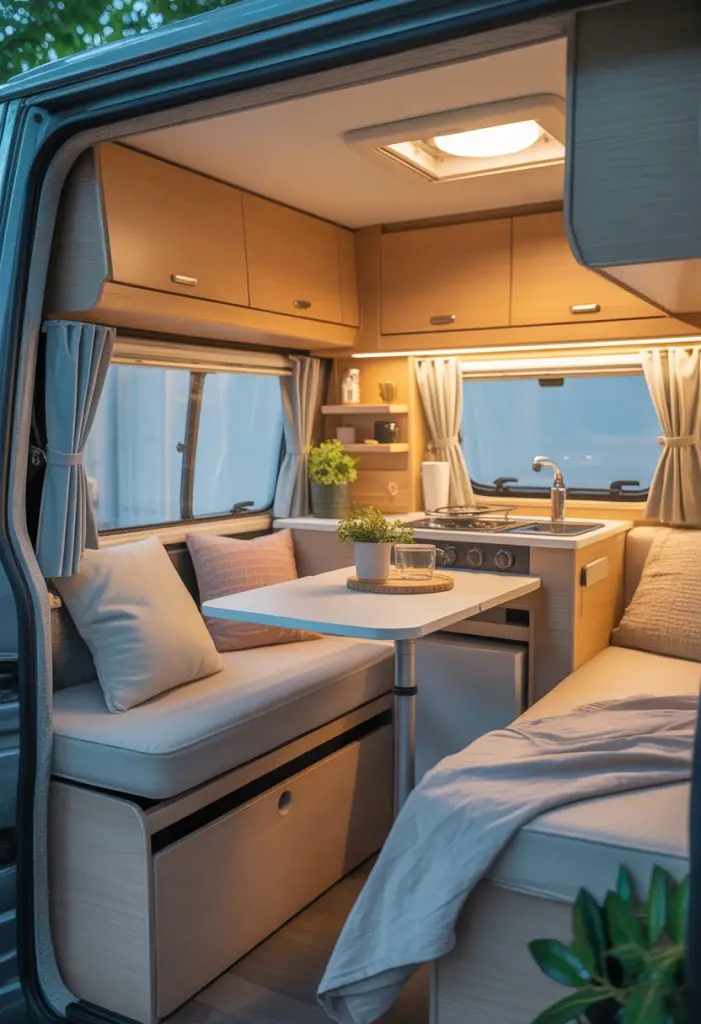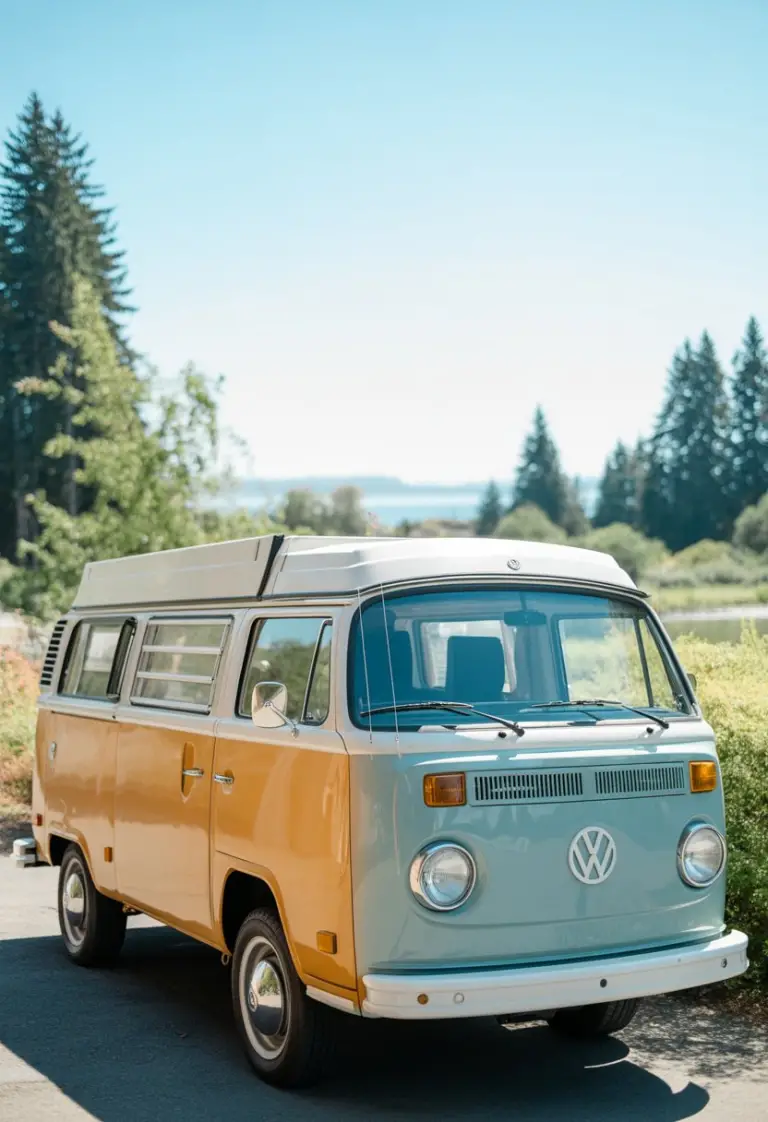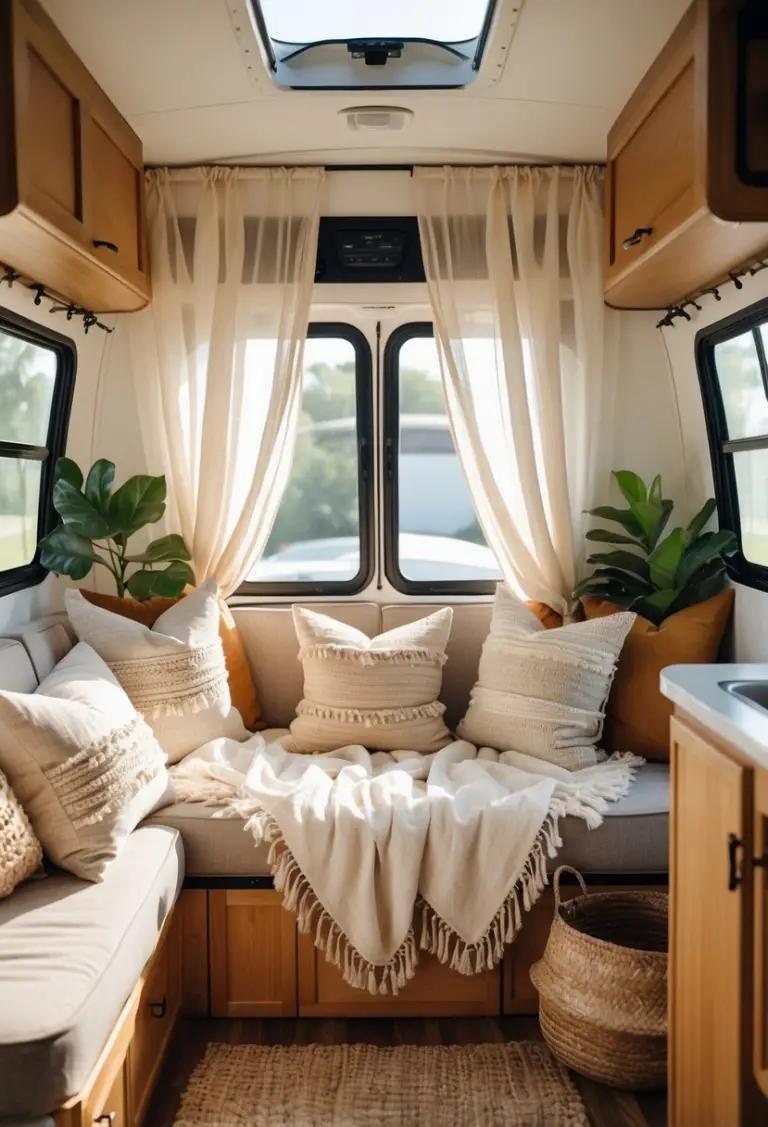Small Camper Interior Ideas – Camper Van Ideas for Maximizing Space and Comfort
Small camper interiors require smart design to make the most of limited space. Many people want their camper vans to feel comfortable and functional without feeling cramped. Effective interior ideas focus on maximizing space, increasing storage, and enhancing livability in small areas.

Choosing the right layout and materials can help turn a tiny camper into a cozy, practical home on wheels. These ideas often balance style with efficiency to suit different travel needs and personal tastes.
1) Multi-functional furniture with built-in storage

Multi-functional furniture helps save space by combining two or more uses. For example, a bench with storage underneath serves as both seating and a place to keep gear.
This type of furniture is useful in small campers because it keeps things organized without taking up extra room. Items like fold-out beds and tables that tuck away increase flexibility.
Using built-in storage makes the camper feel less cluttered and more open, improving comfort during travel and daily use.
2) Fold-out bed with integrated seating

A fold-out bed with integrated seating saves space by combining two functions in one. During the day, it serves as a comfortable seat or bench. At night, it easily unfolds into a bed for sleeping.
This design maximizes floor space and offers storage options beneath the seating. It suits small campers where every inch counts. The bed can be customized to fit different layouts and styles.
3) Wall-mounted foldable dining table

A wall-mounted foldable dining table saves space in small campers. It folds down when needed and easily stows away flat against the wall.
This design helps keep the area open and uncluttered. It is practical for limited spaces and adds flexibility to the living area.
Some models include built-in storage or shelves nearby. This combination maximizes utility without taking up extra floor space.
4) Overhead storage compartments using ceiling space

Overhead storage compartments make good use of unused ceiling space in small camper vans. They help keep items off the floor and counters, which makes the space feel less cluttered.
These compartments can store lightweight items like clothes, books, or kitchen supplies. Proper installation ensures they stay secure while driving. This idea adds extra storage without taking up valuable living space.
5) Magnetic spice racks and utensil holders

Magnetic spice racks save valuable counter space in a small camper. They keep spices neatly organized and easy to reach.
Utensil holders with magnets attach to metal surfaces, preventing clutter in drawers or countertops. This keeps cooking tools within sight and off work areas.
Both options use vertical space well. They help maintain a tidy kitchen, which is important in a limited area like a camper van.
6) LED strip lighting for energy-efficient illumination

LED strip lights are a practical choice for small camper interiors. They use low power, which helps save battery life while providing bright light.
These lights are easy to install with peel-and-stick backing. They can be placed under cabinets, along walls, or around key areas for better visibility.
Many LED strips offer adjustable brightness and color options. This allows users to create the right ambiance and functional lighting without using much energy.
7) Compact swivel chairs for added floor space

Compact swivel chairs help save space inside a small camper van. They can turn and fold away, making the floor area more open when not in use.
These chairs allow flexible seating without taking up extra room. They fit well in tight spaces and improve movement inside the van.
Choosing lightweight, durable materials ensures the chairs are easy to handle. This simple addition can make the interior feel less cramped.
Principles Of Small Camper Interior Design

Designing a small camper interior requires careful planning to use space wisely and add features that serve more than one purpose. Every choice affects comfort, storage, and how easy it is to live in the camper.
Space Optimization Strategies
Maximizing space in a small camper means using every inch efficiently. Vertical storage options like shelves or hanging organizers free up floor space. Built-in cabinets with doors that open fully help keep things tidy and accessible.
Using foldable or collapsible furniture is another key idea. Tables that fold against the wall or beds that convert into seating areas provide flexibility. It is important to avoid clutter by choosing storage solutions that keep items out of sight but easy to reach.
Careful placement of appliances and fixtures can open up movement space. For example, positioning the kitchen in a corner or under a window can make the area feel less cramped. Light colors and good lighting also make the space look bigger and more inviting.
Importance Of Multi-Functional Features
Multi-functional features save space and add convenience in a small camper. Furniture that can serve multiple purposes is essential, such as a bench with storage inside or a table that doubles as a desk.
Convertible beds or seating that turn into sleeping areas allow more flexibility for day and night use. This eliminates the need for separate pieces of furniture, saving valuable space.
Devices like combo washer-dryers or appliances with several functions reduce the number of units needed in the camper. Even lighting can be multi-functional, with dimmable or adjustable lamps that serve as both task lights and mood lighting.
Adding features that serve multiple roles supports a practical and comfortable camper layout without wasting limited space.
Creating A Comfortable Ambiance In Camper Vans

A well-designed camper van interior uses smart lighting and thoughtful colors to make the space feel cozy and inviting. These elements help improve mood and usability without taking up much room or adding clutter.
Lighting Solutions For Small Spaces
Good lighting is essential in small camper vans. Using LED strip lights along cabinets and under shelves adds soft, indirect light that does not take up space. It also helps create a warm atmosphere.
Installing dimmable lights allows for adjusting brightness based on time of day or activity. This flexibility makes the space functional for cooking, reading, or relaxing.
Natural light can be maximized with skylights or large windows. When natural light is low, portable lamps or battery-powered lights offer easy, low-energy options. Avoid harsh overhead lights, which can feel cold in small spaces.
Color Palettes And Material Choices
Choosing the right colors affects how open and calm the camper feels. Light colors like whites, creams, and soft grays make spaces appear larger and brighter.
Using natural materials such as wood or bamboo adds warmth and texture. Matte finishes reduce glare and keep the look relaxed.
Bold colors should be used sparingly for accents to avoid overwhelming the senses. Soft fabrics and cushions in neutral tones improve comfort while maintaining a clean design.
| Aspect | Recommendation | Reason |
|---|---|---|
| Base Colors | Light neutrals (white, gray) | Brightens and enlarges space |
| Accent Colors | Earth tones or muted hues | Adds character without clutter |
| Materials | Wood, bamboo | Brings warmth, natural feel |
| Finishes | Matte | Less reflective, calming |


